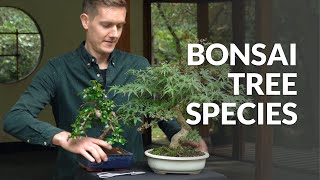Ash Bonsai Care guidelines
The ash thrives in full sun or partial shade. During the hottest weeks of summer it is advisable to provide some shade over midday and early afternoon. Ash species from temperate climates only need protection from stronger frost when they are planted in bonsai containers, whereas some ashes from warmer climates should be kept in a frost-free greenhouse during the winter.
The ash bonsai tree should be watered thoroughly as soon as the soil gets dry. It does not like longer droughts or constant wetness. In winter it needs less water but should not dry out. Ash trees do not have special requirements concerning water quality, they tolerate pH values between 5.5 and 8, so rain water and most tap water can be used. Continue reading about watering Bonsai trees.
Watering
Free lecture from the Beginners CourseUse a solid organic fertilizer every month and / or a liquid fertilizer once a week during the growing season. Ashes need good feeding for their vigorous growth, but excess fertilizer will promote overly long internodes and large leaves. Evergreen ashes might need a little fertilizer during the winter if they are not completely dormant.
The ash grows and thickens rather quickly and requires frequent trimming in order to produce a good ramification. Allow the shoots to extend to three or four nodes before pruning them back to one or two leaves. Overly large leaves can be removed or shortened. The best time to prune larger branches is in late autumn. The ash can be wired in autumn or winter to improve the branch lines. Guy wires are also a good option for shaping stronger branches. Continue reading about pruning Bonsai trees.
Ash trees should be repotted every two or three years in early spring with normal root-pruning. Older and larger specimen can be repotted in longer intervals. Use a well-draining standard soil mixture. Continue reading about repotting Bonsai trees.
Ashes can be propagated from seed or cuttings. Air-layering is also possible.
The ash bonsai tree can be attacked by aphids, scale, spider mites, caterpillars, ash borers, rust, powdery mildew or leaf-spot fungus. Use a specific pesticide or ask a professional gardener for help in difficult cases. For more detailed information on these techniques, check out our Bonsai tree care section.

Ash Bonsai (Fraxinus) by Steve Greaves
General information about the Ash Bonsai tree
Ashes have dark green compound leaves with 9 – 13 leaflets. The leaves of deciduous ashes, which are the majority, change to a bright yellow colour in autumn, before they fall. There are also a few evergreen species, though. In spring, before the leaf buds open, small white unimposing flowers appear on mature trees, followed by papery winged nut fruit which hang in dense clusters. The trunk grows upright with a furrowed bark, even on younger specimen, strong branches and coarse twigs. Some Asian species have more delicate twigs and leaves and can also be used for creating smaller bonsai, in contrast to the commons ash, which should rather be used for larger size bonsai trees.
Among the most popular ash species, beside the common ash, are the Manna ash (Fraxinus ornus), the narrow leafed ash (Fraxinus angustifolia), Oregon ash (Fraxinus latifolia) and several species from South-East Asia, like Fraxinus griffithii, Faxinus sieboldiana and Fraxinus paxiana. The European species are frost-hardy while some species from warmer regions need more careful frost-protection.
If you need help identifying your tree, take a look at our Bonsai tree identification guide.





